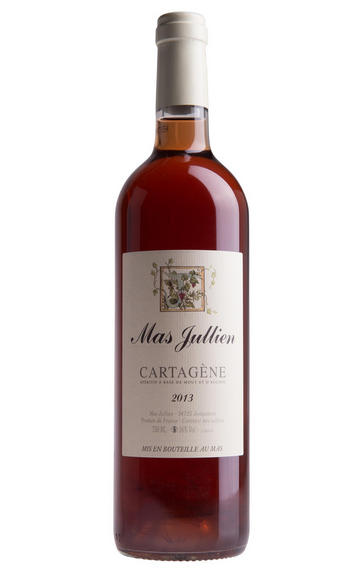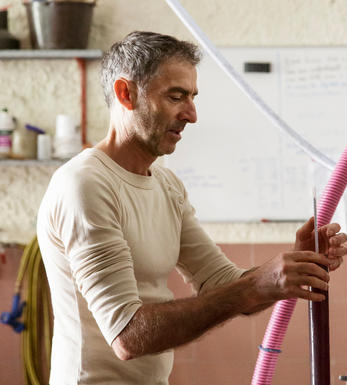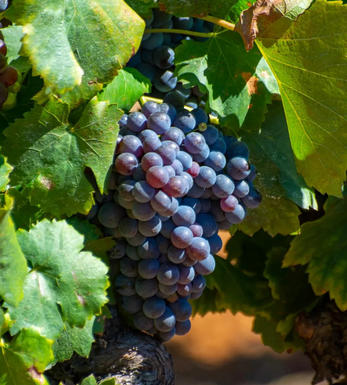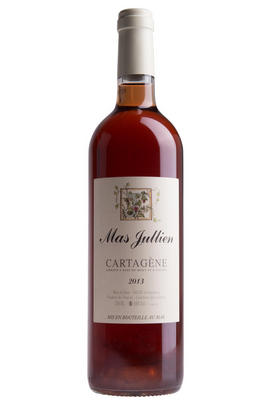
About this WINE

Mas Jullien
Mas Jullien's 15 hectares were developed by Olivier Jullien in 1985. It is located in an area of magnificent wine potential, that of the Terrasses du Larzac (Côteaux du Languedoc), in Jonquières amidst the rocky terraces of the plateau (if that doesn’t sound too contradictory), itself situated 40 km to the north of Montpellier.
The terroir is divided between the argilo and the calcaire (clay and the limestone); the wines themselves come from Syrah, Mourvèdre and Carignan, vinified by parcel and aged for around 18 months in demi–muid, delivering plenty of garrigue-influenced charm and a pleasing purity.

Cinsault
Cinsault (pronounced "sin-so") is a red grape variety known for its versatility and contributions to various wine regions worldwide. It has a rich history, primarily in the Languedoc region of southern France, but it has spread to many other wine-producing areas due to its adaptability to different climates.
Cinsault grapes are medium-sized with thin skins, typically dark blue to black in colour. The vines are hardy and drought-resistant grapevine, making them suitable for warm and arid climates. They are particularly well-suited to Mediterranean regions and thrive in areas with hot summers.
While Cinsault is mainly used in red wine production, it is also sometimes used in rosé wines, adding light and fruity character. It is often blended with other grape varieties to enhance the wine profile.
The variety tends to exhibit a range of flavours, including red berries, cherries, and sometimes a hint of spices. When used in rosé wines, it can bring out more floral and watermelon notes.
Tannins are typically on the lower side, which can make them more approachable and enjoyable in their youth. The variety is often used in blends to soften and round out more tannic grape varieties.
Cinsault has been a key component in traditional blends in southern France, such as in Châteauneuf-du-Pape wines. Over time, it has gained popularity in other wine regions as winemakers recognize its potential for producing high-quality wines.



Buying options
Add to wishlist
Description
Organic, biodynamic and made from a blend of Cinsault, Carignan, and Mourvèdre this structured rosé shows delicate berry aromas with hints of spice and garrigue. The palate is generous in flavour and the ripe berry fruit is perfectly in balance with its fresh acidity. Olivier Julien’s perfectionism pays dividends here with an extremely moreish and elegant wine which will pair well with grilled meats, fish or summer salads.
Oliver Barton, Wine Buyer
wine at a glance
Delivery and quality guarantee